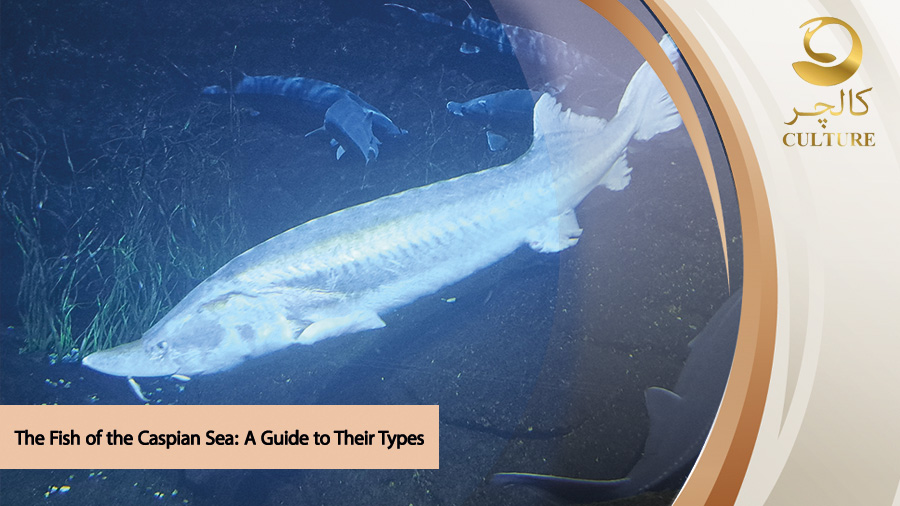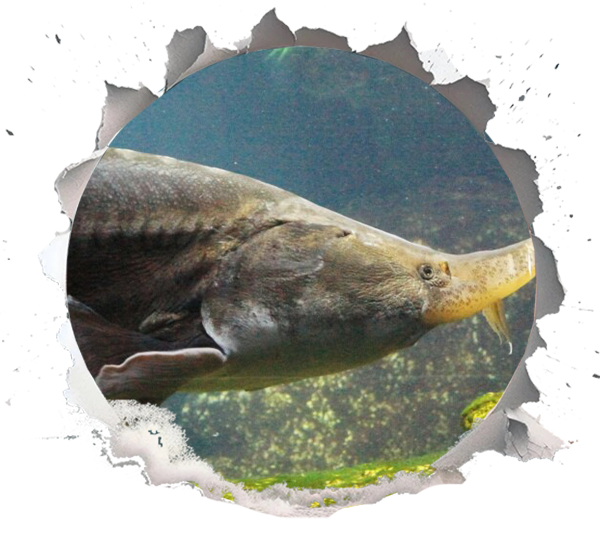The Fish of the Caspian Sea: A Guide to Their Types

The Caspian Sea is the biggest inland body of water on Earth. It sits between Europe and Asia, with shores in five countries: Russia, Kazakhstan, Azerbaijan, Turkmenistan, and Iran. People often call it a sea, but it is really a lake because it has no link to the ocean. Its water is a bit salty, about one-third as salty as the sea, and it gets most of its fresh water from rivers like the Volga. In the past, 90% of the world’s caviar came from the Caspian Sea. Sturgeon make up six main types here, and they are key to the sea’s fame. Other well-known fish include whitefish, salmon, carp, and pike. Here we look at the main types of fish in the Caspian Sea.
The Caspian Sea is full of life, but it faces big problems from pollution. Farms and factories around it dump waste, which harms plants and animals. Still, it is famous for its fish. Over 115 types of fish live in the sea itself, and many more in its rivers. About 73 of these are found only here and nowhere else. The sea is home to groups like gobies, carp family fish, and herring types. But the stars are the sturgeon fish, which give us caviar, the tiny eggs that people prize as a luxury food.
The Rich Mix of Fish in the Caspian Sea
The Caspian Sea has a great mix of fish. Experts have found about 120 to 160 types in the whole area, including rivers. Many are freshwater kinds, but some like the salty mix. Big groups include carp (23 types), gobies (36 types), and herring (18 types). These make up most of the fish; about 77%. Sturgeon stand out because of caviar. But there are many others that people catch for food. For example, herring swim in big groups and are cheap to buy. Carp live near the bottom and eat plants. Perch and pike are hunters that chase smaller fish.
The sea’s fish help the people around it. Fishing gives jobs and food to millions. In Iran and Russia, fish like whitefish are favourites. But over time, too much fishing and dirty water have hurt the numbers. Now, many fish are at risk, and people must act to keep the balance. Let us look at some key fish one by one. We start with the common ones and move to the special sturgeon.
Whitefish (Rutilus kutum)

Whitefish, or kutum, is a favourite fish in the Caspian Sea. It has a long, slim body with shiny silver scales. The tail splits in two, and the white meat tastes great. Males are longer with white spots on their heads. Shops sell wild or farmed types; wild ones often taste better. In northern Iran, it is a top choice, but small bones make it tricky to eat. Grill or fry it whole. It lives in southern waters near Iran, swimming in groups and eating small plants and animals. In spring, it heads to rivers to lay eggs, but overfishing has reduced numbers. Rules now limit catches. This fish is healthy with omega-3 fats for the heart. Pair it with rice or herbs.
Salmon (Salmo trutta caspius)

Caspian salmon is a delight, sometimes called saman. It is long and thin with small scales, a silver shine, and a black spot near the head. The skin is white or orange, and meat is pink. Its large orange or red eggs are used for roe, though less than sturgeon. It tastes best smoked, served on bread with butter. Numbers have dropped due to dams and pollution. It is now rare and costly. Farms raise some, but wild is preferred. It lives in the sea but breeds in fresh water, eating smaller fish. It can grow over a metre.
Common Carp (Cyprinus carpio)
Carp is sturdy, caught near shores. It has a wide body, golden-brown colour, and big scales. Living in muddy bottoms, it can taste earthy and eats plants and bugs. Caught in rivers too, it prefers fresh areas in the Caspian. Fry or grill it; soak in milk to improve flavour. It is common, cheap, but bony. Farms produce many, easing pressure on wild stocks.
Kilka or Caspian Herring (Clupeonella cultriventris)

Kilka is a small herring that swims in large groups. Russia catches plenty from southern waters. Sold canned, smoked, or frozen. Scales fall off easily. It eats plankton and feeds bigger fish like sturgeon. Cheap and oily for health, grill or fry whole. Types include big kilka and anchovy-like ones, moving like an army.
Brown Trout (Salmo trutta)
Brown trout lives in sea and rivers. It is small with spotted skin; some have red spots. Caught for sport or food. It likes cold water, eating insects or small fish, and stays near clean Caspian rivers.
Pike or Duck Fish (Esox lucius)
Pike has a duck-like long nose, strong teeth, olive-grey scales, and yellow belly. It hunts fish up to a third its size. Moves between rivers and sea. Fry or grill it, but bony meat and strong taste make it less popular. It eats up to 20% of its weight in small fish, hiding in weeds.
Zander (Sander lucioperca)
Zander is a top seller after whitefish. Long and thin with pointy nose, fine silver scales, no spines, and soft white meat. Lives in sea but spawns in rivers, eating small fish at night. Grill or bake for best taste.
Golden Mullet (Chelon aurata)
Mullet has a sharp silver nose and big scales. White, firm meat. Smoke, fry, or grill with lemon. Swims near coasts, eats algae, and sometimes jumps from water.
Anchovy Types
Anchovies are small with silver scales. Types: gypsy (blue like peacock), black (dark lead), king (wide silver body). Fry or grill. They form big groups and eat plankton.
Bream (Abramis brama)
Bream is flat like a book, with shiny silver scales. Fatty meat with small bones. Salt and dry for eating. Moves from rivers to sea, likes calm waters.
Caspian Roach (Rutilus caspicus)
Roach is small and dark with carp-like scales. Fry or grill it. Like other carp, it eats bottom food.
Herring (Alosa species)
Herring swims in big flocks; “herring” means army. Scales detach easily. Cheap, oily, good for canning. Caspian has 18 types, many unique here.
The Famous Sturgeon Fish
Sturgeon are the kings of the types of Caspian Sea fish. Six main types live here, mostly in the south. They are old fish, like dinosaurs, with bony plates instead of scales. They grow big and live long; some over 100 years. Sturgeon give us caviar, the black or grey eggs that taste salty and rich. In the past, the sea gave most of the world’s caviar. But now, wild catch is banned in many places to save them. These fish are anadromous; they live in the sea but swim up rivers to lay eggs. Dams and dirt have hurt this. Pollutants change their paths, and too much fishing has made them rare. Today, most caviar comes from farms. This helps wild fish recover. But we must watch the sturgeon habitat to keep them safe. Their homes include river bottoms, deltas, and sea coasts where they feed on shellfish and small fish. Let us meet the six types.

- Beluga Sturgeon (Huso huso): Beluga is the biggest. It can grow over 5 metres and weigh 2,000 kg. Eggs are large and light grey; top caviar. Beluga lives long, up to 100 years. It eats fish and grows slow. Rare now, protected.
- Russian Sturgeon (Acipenser gueldenstaedtii): Russian sturgeon has medium eggs, golden-brown. It grows to 2 metres. Meat is tasty too.
- Persian Sturgeon (Acipenser persicus): Persian is like Russian but from south Caspian. Eggs are dark and nutty taste.
- Stellate or Sevruga Sturgeon (Acipenser stellatus): Sevruga has small, strong-flavoured eggs. Body is slim with star-like plates.
- Ship Sturgeon (Acipenser nudiventris): Ship has bare belly. Less common for caviar.
- Sterlet Sturgeon (Acipenser ruthenus): Sterlet is smallest, with fine eggs. Grows to 1 metre. All these face big risks.
Dangers to Caspian Sea Fish
The fish of the Caspian Sea are in trouble. Two big reasons: too much fishing and lost homes. Overfishing hits sturgeon hard. People took too many for caviar, and numbers crashed. Now, some are almost gone. Habitat loss comes from dams that block rivers. Fish cannot reach spawn spots. Pollution from oil, farms, and cities kills eggs and food. New threats include falling water levels. By 2025, the sea has dropped fast; up to 18 metres by 2100. This hurts seals, sturgeon, and coasts. Warm water events, or marine heatwaves, have risen 125% in frequency. They stress fish and kill many.
Invasive fish from other places compete for food. The sea has over 850 animal types, but changes hurt the balance. For Iran, this sea is key after the Persian Gulf for fish types. But 80% of fish need rivers, and humans have ruined many with building and waste. If we do not act, more fish will vanish. The Caspian seal is already endangered, down to less than 10% of old numbers.
Saving the Fish: Conservation and Farming
People are working to save the fish of the Caspian Sea. Countries around it signed deals in 2018 to share the sea and protect it. Efforts include cleaning rivers and removing dams for fish paths. Artificial breeding releases young fish into the wild. Iran and Russia do this for sturgeon and whitefish. But it is not enough. More species need help, and the sea’s size makes it hard. Farming fish is a big step. For sturgeon, farms grow them in tanks or ponds. This gives caviar without killing wild ones.
Sturgeon farming techniques include using closed systems that reuse water. Farmers feed them special food and wait 7 to 20 years for eggs. Some use gentle ways to take eggs without harm. Farms are in China, Iran, and Europe now. They make caviar from types like Siberian or white sturgeon. But what about the caviar farming impact? It cuts wild fishing, helping sturgeon recover. Yet, farms use energy and feed from wild fish. Good farms recycle waste and use green methods to lower harm.
In Iran, farms help meet demand without hurting the Caspian. Brands focus on sustainable caviar to protect nature. Dredging bays like Gorgan helps water flow. Wetlands like Gamishan, 20,000 hectares, need saving from drying. Science helps too. Studies track fish and sea changes. The Caspian is a lab for climate effects.
Why the Caspian Matters
The Caspian Sea is more than a lake; it is a treasure. It holds the world’s biggest bony fish, the beluga, and the priciest food, caviar. Its fish feed people and boost trade. But we must use it wisely. For future kids, keep it clean and full of life. By choosing farm caviar and supporting saves, we help. Learn about these fish, and you see the sea’s wonder. From whitefish meals to sturgeon stories, it links us to nature.

